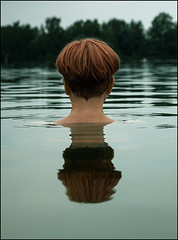You’ve spoken about art as both a means of promoting individual identities and bringing different groups together. How can one involved in the arts strike a balance in this respect?
I think the core of arts is the balance of commonality and difference. In arts, you find what we have in common, but you also find our individuality. In the former it’s the common human identity, in the latter it’s difference personal identity. When you engage with a work of art, you’re engaging with yourself, even though it’s somebody else’s work of art.
Do you think that relationship is different when you, as an artist, are engaging with your own work of art, than when you are engaging with someone else’s work of art?
Well I think the process of art is a process of enquiry. Like science, art investigates the world. It goes about it by somewhat different means, but the mission is pretty much the same. In asking questions to which you profoundly don’t know the answers, but believe are still worthwhile questions, you do find yourself. There’s a sense of whatever you do being autobiographic, or a self portrait. There comes a moment of real surprise, sometimes, when you find something looking back at you which is actually familiar. You may later have this experience when you catch a glimpse of yourself in a shop window, or look into a mirror unexpectedly and you think “what’s my dad doing here?”
How often do you think that controversial art creates a setback in cultural diplomacy? Or do you always need to shock?
No, you don’t have to shock, but you do have to go across boundaries. Anything that is creative is, by definition new. If it’s new, it can’t be expected – it’s going to have an element of surprise, and possibly shock. So, all good art is going to be a surprise. The only art that measures up to expectations is historic art, and even then, if you engage with it, you will find something meaningful. I firmly believe that all art from all periods of history is contemporary, because you look at it in the present moment. It always exists as art in the present moment.
Do you think, in that sense, that art has been much more political during different periods in history, than during others, or do you think the role of art in politics has remained constant?
Some art has been hugely political – some art which is celebrated in our period is celebrated for reasons other than those for which it was celebrated during its time. The only safe art is dead art.
How do you see the relationship between soft power and hard power? You’ve already talked about how this relationship should not be viewed as a sort of clash.
This is a brilliant topic, with brilliant questions which stimulate discussion. What I’ve been doing is looking at the terms of reference of the questions, not accepting dualism. Dualism is, however, great for stimulating discussion – are you for us, or are you against us? I’ll be giving a talk later on about the work of art – what it does, and how it does it, starting with the question of how art crosses boundaries. The image came to me of ghosts – ghosts walk through walls, even if you don’t believe in them, and they succeed, even if they don’t exist. They do it because they don’t see the walls. If you don’t see walls, you can pass through them. If you do see them, you won’t try.
19.02.2011 – Interview conducted by Emma Lough
Center for Cultural Diplomacy Studies Publication
Institute for Cultural Diplomacy
www.ccds-berlin.de
www.culturaldiplomacy.org










Discussion
No comments yet.